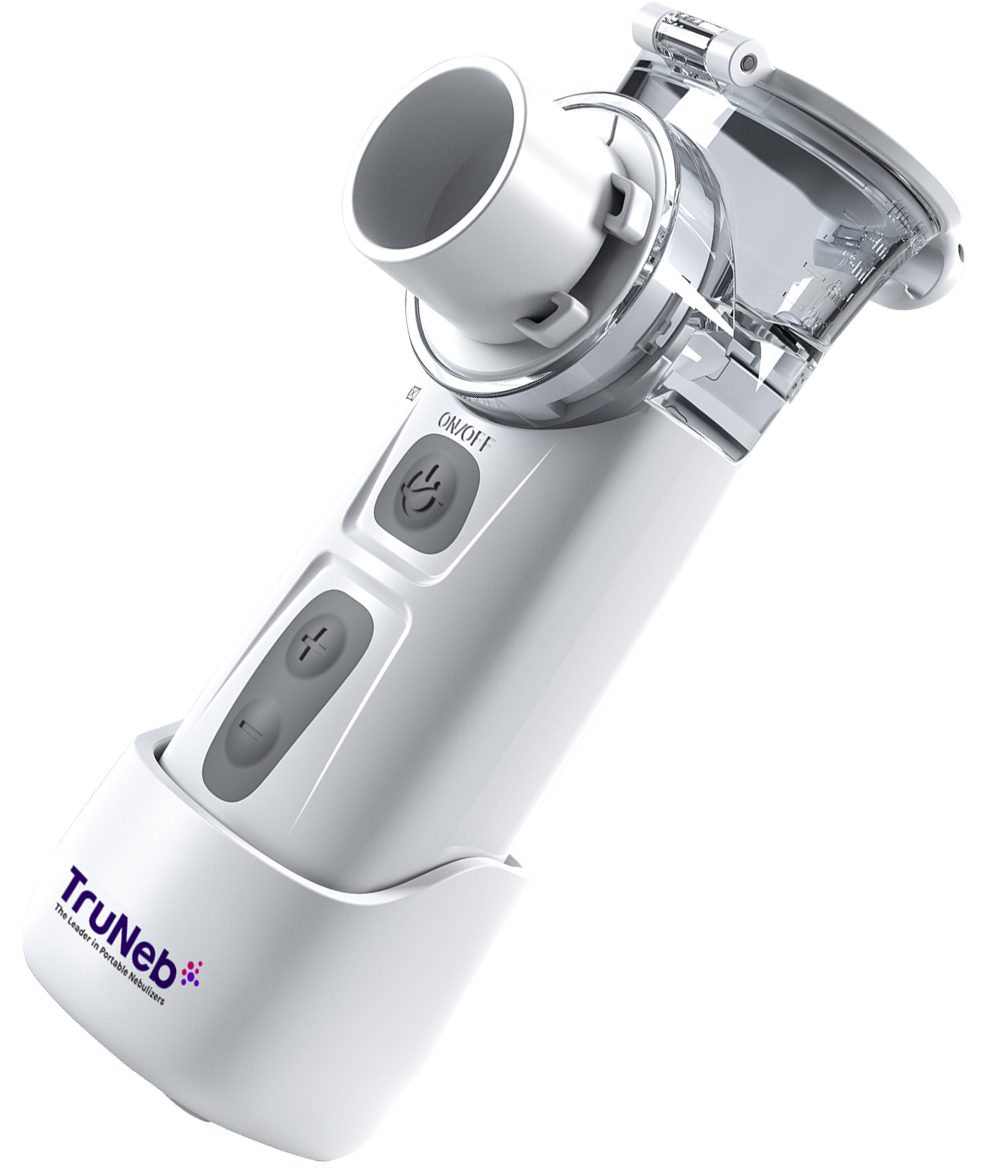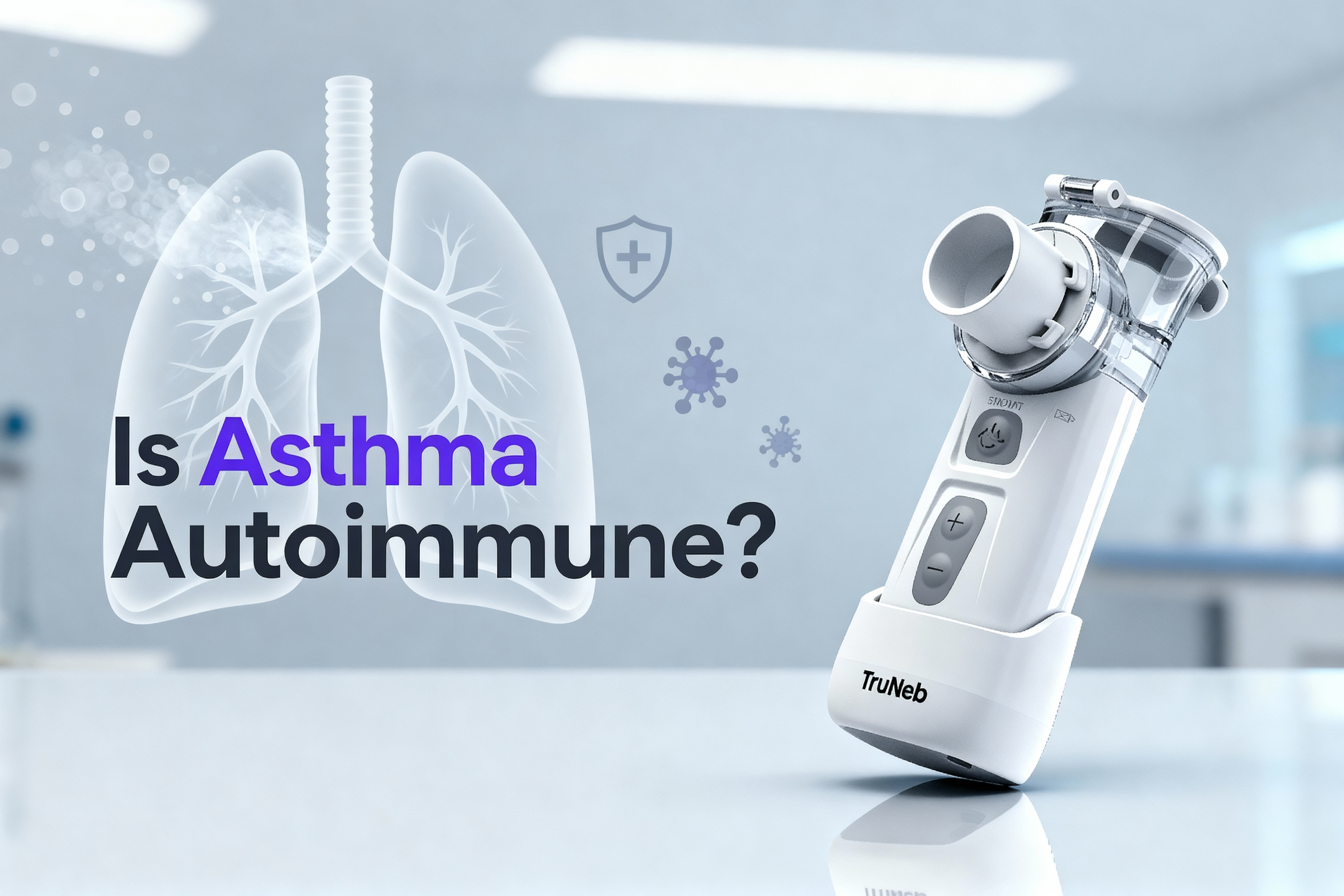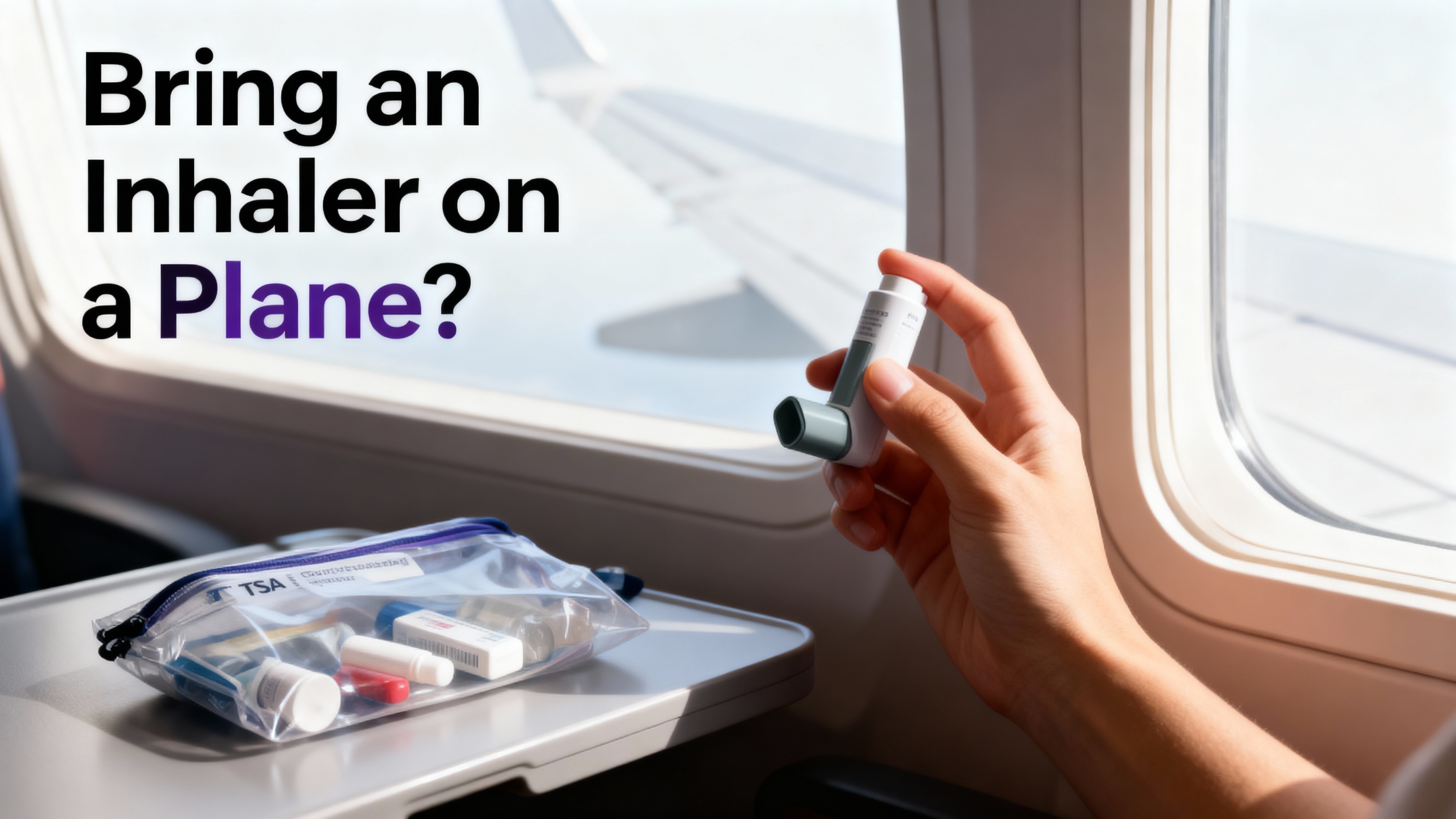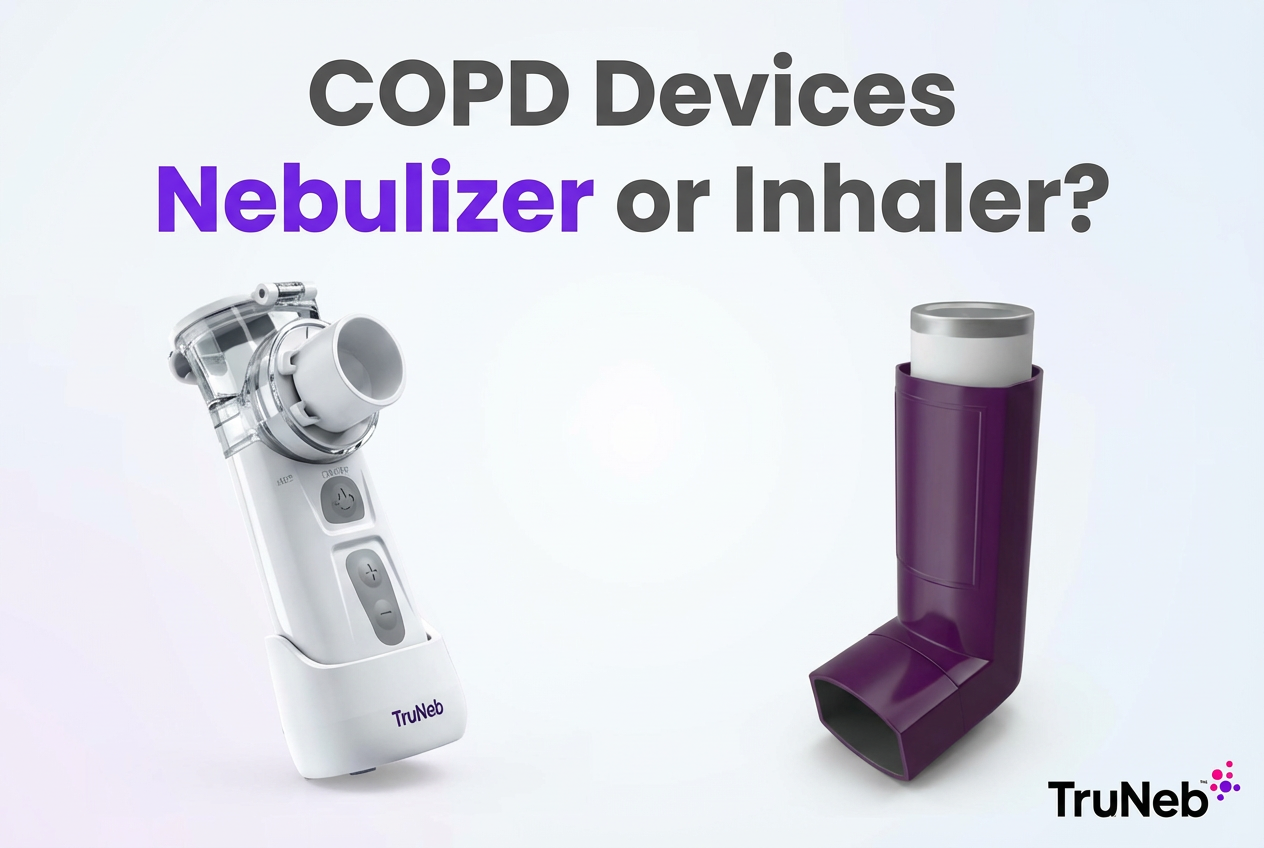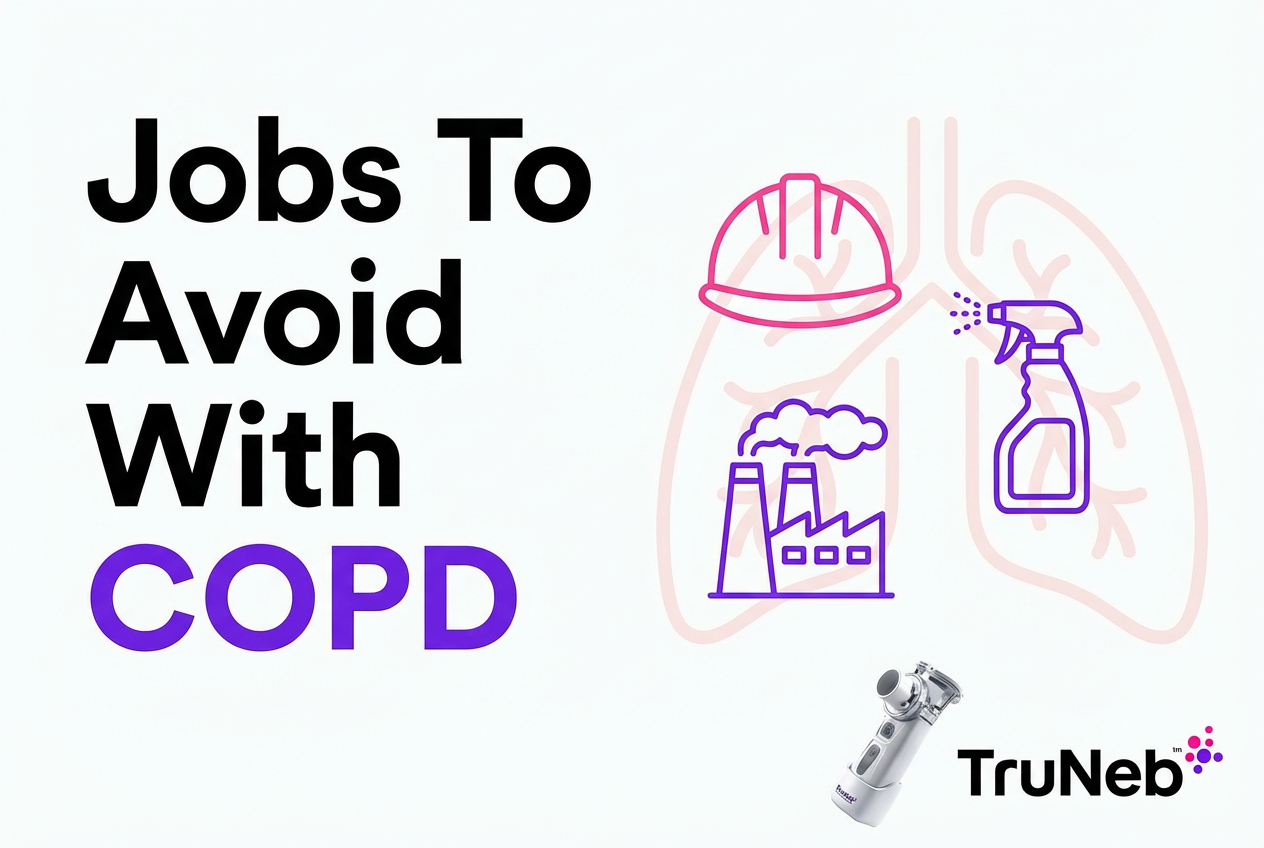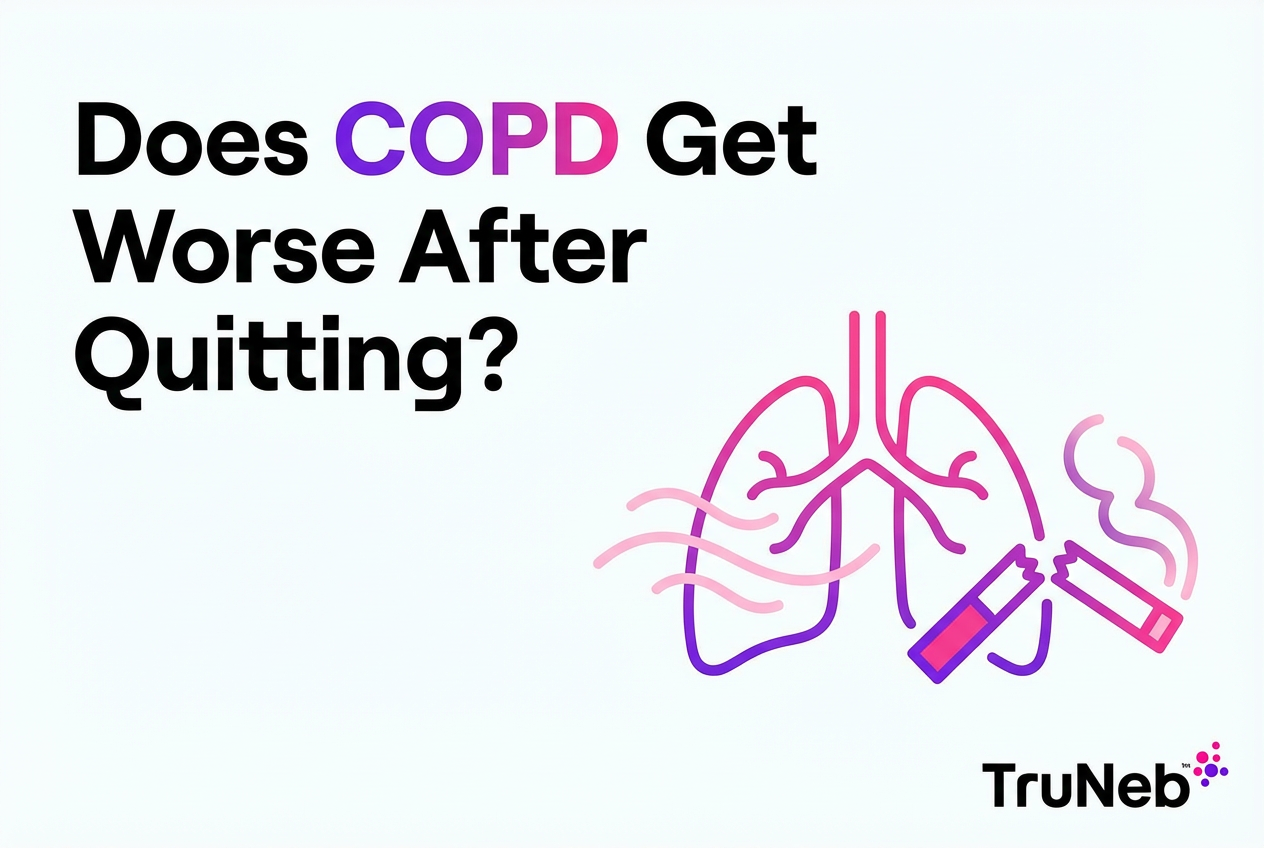On this page
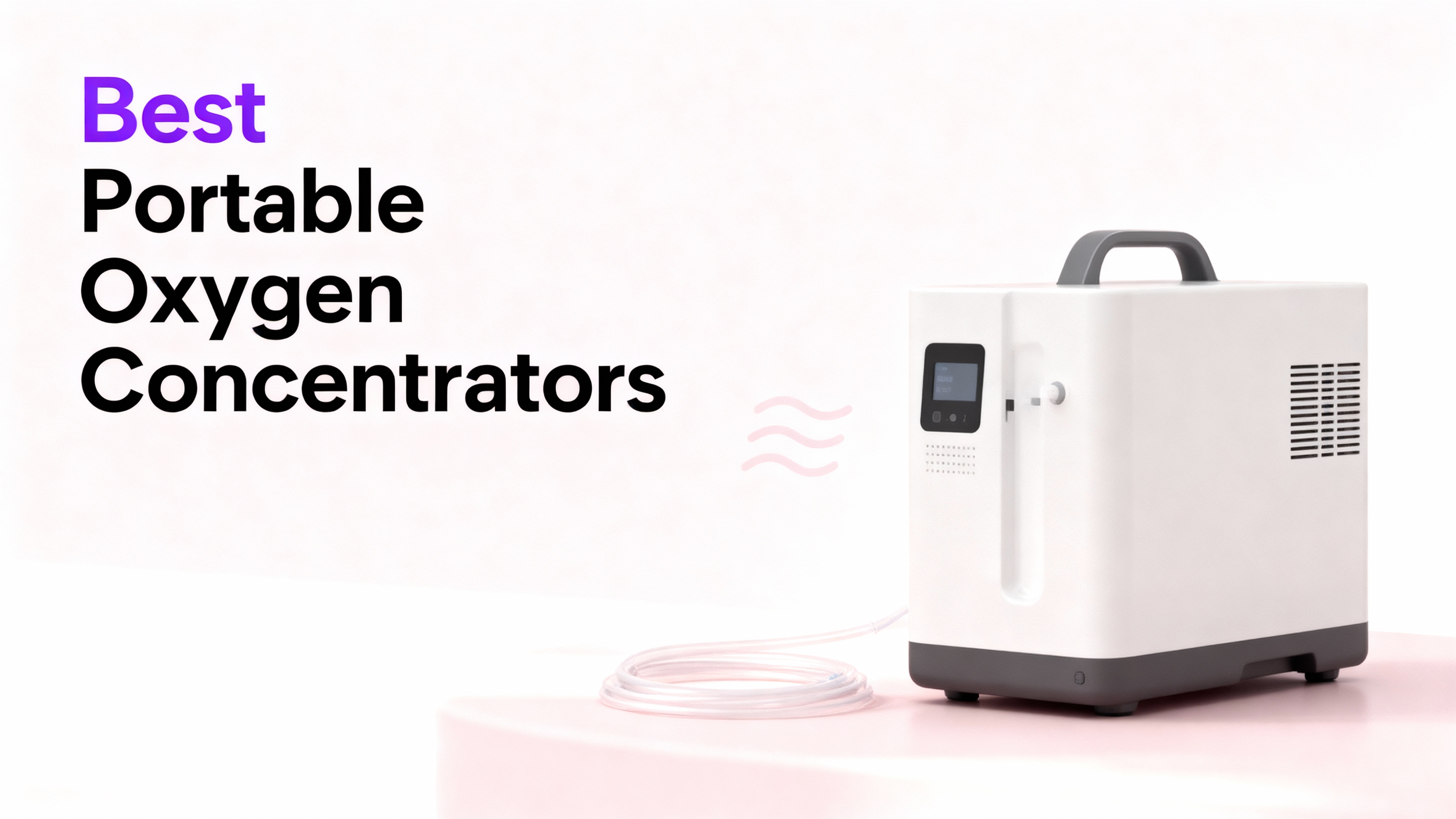
What Is a Portable Oxygen Concentrator and Who Needs One?
A portable oxygen concentrator (POC) is a small, battery-powered medical device that pulls in room air, concentrates the oxygen, and sends it to you through a nasal cannula.
Unlike oxygen tanks, POCs don’t store oxygen. They make it on demand, so you don’t need refills. That makes day trips, errands, and travel simpler.
POCs are commonly prescribed for people with COPD, pulmonary fibrosis, and other chronic lung diseases like interstitial lung disease who have low blood oxygen levels and want to stay mobile. Most reputable POCs are FAA-approved for airline travel.
Important: In the U.S., you need a prescription for a medical-grade oxygen concentrator. Be cautious with “oxygen machines” sold online without a prescription—they may not deliver therapeutic oxygen.
A POC is a portable device that concentrates oxygen from room air so you can stay active while on oxygen therapy.
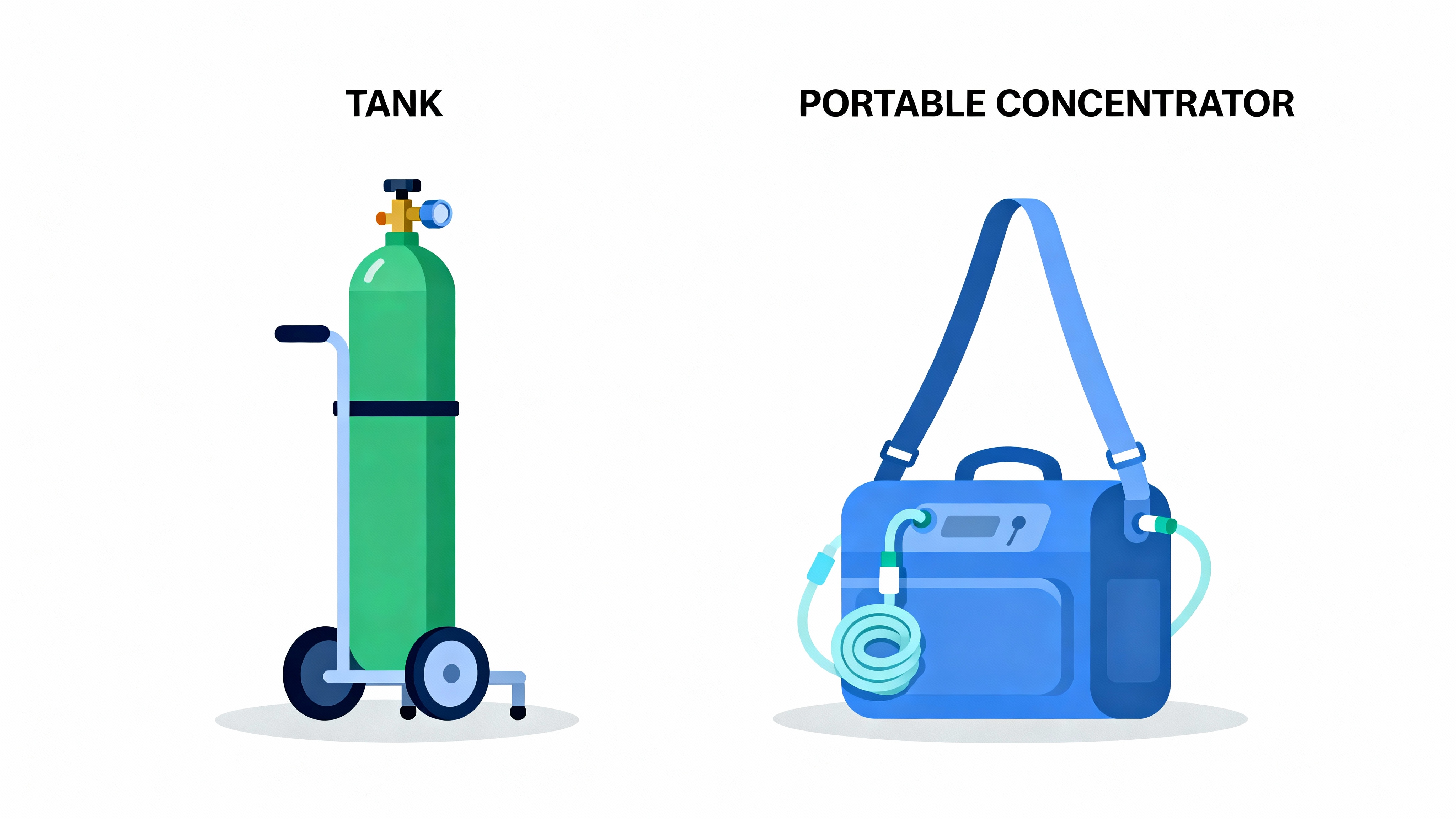
How Do Portable Oxygen Concentrators Work?
POCs use an internal compressor and special filters (molecular sieve beds) to pull nitrogen out of room air. What’s left is oxygen-rich air (often around 90% or more), delivered through a nasal cannula. Purity depends on the setting and model.
There are two delivery types:
- Pulse dose: oxygen comes in small bursts when you inhale. This saves battery and keeps devices light.
- Continuous flow: a steady stream measured in liters per minute (LPM). These units are bigger and drain batteries faster.
Most POCs run on rechargeable batteries and can plug into wall (AC) or car (DC) power.
Pulse dose sends puffs when you breathe in, while continuous flow sends a steady stream all the time.
Why Go Portable? Key Benefits
- More mobility: run errands, see friends, and enjoy events without planning tank refills.
- Unlimited oxygen from room air: as long as you have battery power, it keeps making oxygen.
- Travel-friendly: most top POCs are FAA-approved for flights.
- Simple upkeep: wipe the device, keep filters clean, and charge batteries—no tank swaps.
Portable concentrators help you stay active and social by making oxygen on the go.
Our Top 6 Best Portable Oxygen Concentrators
We looked at oxygen output, weight, battery life, reliability, travel readiness, and ease of use. These are portable oxygen concentrator reviews to help you compare top rated portable oxygen concentrators. For trips, the Inogen One G5 (Inogen Rove 6) is a strong candidate for the best portable oxygen concentrator for travel thanks to high pulse settings and long battery options. There isn’t one “best” for everyone, so we matched each pick to a common need.
- 1) Inogen One G5 (Inogen Rove 6) — Best overall: strong pulse settings in a light package and excellent battery options.
- 2) CAIRE Freestyle Comfort — Best for comfort and quiet: ergonomic shape and low noise.
- 3) Philips Respironics SimplyGo — Best continuous-flow portable: up to 2 LPM continuous plus pulse mode.
- 4) Precision Medical Live Active Five — Best value pick: solid performance at a friendlier price point.
- 5) Inogen One G4 (Inogen Rove 4) — Lightest: tiny and easy to carry for lower oxygen needs.
- 6) O2 Concepts Oxlife Liberty — Long battery life with dual batteries: dual-battery design for long days out.
1) Inogen One G5 (Inogen Rove 6) — Best Overall
- Why it stands out: high pulse settings (up to 6), under ~5 lb with a strong battery option. FAA-approved.
- Battery: up to 13 hours with the 16‑cell extended battery at setting 2 (manufacturer-rated).
- Cons: pulse only (no continuous flow) and premium pricing.
- Best for: active users who need higher pulse settings and long battery life for travel.
2) CAIRE Freestyle Comfort — Best for Comfort & Quiet
- Why it stands out: curved, body-hugging design and quiet operation. Pulse settings up to 5. FAA-approved.
- Battery: up to about 8 hours with the large battery at setting 2 (manufacturer-rated).
- Cons: no continuous flow; battery life shorter than the longest-running options.
- Best for: people who carry their device for hours and want a low-noise feel.
3) Philips Respironics SimplyGo — Best Continuous-Flow Portable
- Why it stands out: offers continuous flow up to 2 LPM and pulse settings 1–6. FAA-approved.
- Battery: about 3.5 hours at pulse setting 2, around 1 hour at 2 LPM continuous per battery; best near power or with spares. Usually used with the small rolling cart.
- Cons: heavier than pulse-only models; check local availability.
- Best for: users who need continuous flow (nighttime or higher constant needs) in a portable format.
4) Precision Medical Live Active Five — Best Value
- Why it stands out: dependable performance with pulse up to 5, typically at a lower cost. FAA-approved.
- Battery: swappable batteries, roughly 4.5 hours at setting 2 per battery (manufacturer-rated).
- Cons: no continuous flow and fewer “smart” extras.
- Best for: budget-minded users who still want a capable, compact unit.
5) Inogen One G4 (Inogen Rove 4) — Lightest Pick
- Why it stands out: about 2.8 lb with pulse settings 1–3. Super small for errands and travel. FAA-approved.
- Battery: up to about 5 hours with the extended battery at setting 2 (manufacturer-rated).
- Cons: limited to lower settings; not designed for higher oxygen needs.
- Best for: mild to moderate needs where size and weight matter most.
6) O2 Concepts Oxlife Liberty — Long Battery Life with Dual Batteries
- Why it stands out: dual-battery design helps stretch time away from outlets. FAA-approved.
- Battery: with two batteries, up to around 8 hours at setting 2 (manufacturer-rated).
- Cons: is a bit heavier than some pulse-only units; check availability and support in your area.
- Best for: long days out, road trips, and travel where charging is hard.
Pick the model that fits your oxygen needs first, then weigh battery life, weight, and budget. For travel, look for FAA approval and extended battery options.
| Model | Weight | Oxygen delivery | Battery notes | FAA approved |
|---|---|---|---|---|
| Inogen One G5 (Rove 6) | ~4.7–5 lb | Pulse 1–6 | Extended battery options for long days | Yes |
| CAIRE Freestyle Comfort | ~5 lb | Pulse 1–5 | Large battery available; quiet operation | Yes |
| Philips Respironics SimplyGo | ~10 lb | Continuous up to 2 LPM + pulse | Shorter on continuous; best with cart/near power | Yes |
| Precision Medical Live Active Five | ~5 lb | Pulse 1–5 | Swappable batteries extend runtime | Yes |
| Inogen One G4 (Rove 4) | ~2.8 lb | Pulse 1–3 | Lightest; extended battery recommended | Yes |
| O2 Concepts Oxlife Liberty | ~5–6 lb | Pulse 1–5 | Dual-battery design for long days | Yes |
Notes: Battery runtime varies with setting, breath rate, and battery size. Verify exact weight and included accessories with your supplier.
How to Choose the Right Portable Oxygen Concentrator
Choosing comes down to your prescribed oxygen needs and your day-to-day life. Use this guide to narrow it down.
Oxygen Delivery: Pulse vs Continuous
- Pulse dose sends bursts when you inhale. Lighter devices and better battery life.
- Continuous flow sends a steady stream (LPM). Heavier units and faster battery drain.
- Night use: some people need continuous flow during sleep. Your doctor can check this with a pulse oximeter test.
Oxygen Output and Settings
- Pulse settings aren’t equal across brands. A “3” on one device doesn’t always match a “3” on another.
- Ask your doctor what setting or LPM you need at rest and with activity. Make sure the device can meet that.
- Compare the device’s ml-per-breath or equivalent oxygen volume in the manufacturer’s specs.
Battery Life and Power
- Plan for real life: errands, appointments, or a flight. Extended batteries and DC power (car) can help.
- For flights, pack enough batteries for 150% of flight time.
Size, Weight, and Comfort
- Under ~5 lb is easy to shoulder-carry. Heavier units may ride on a small cart.
- Check carry options: shoulder bag or backpack that fits your body.
Noise and Maintenance
- Most quality POCs are fairly quiet. If sound-sensitive, ask about decibel levels.
- Keep filters clean and wipe the device. Follow the user manual.
Match the device to your oxygen prescription first, then pick the weight and battery that fit your routine.
Costs, Insurance, and Buying Options
How Much Do Portable Oxygen Concentrators Cost?
New POCs typically range from about $2,000 to $4,000 in the U.S., depending on brand, model, and what’s included (like extra batteries or an external charger). Extra batteries add cost.
Does Insurance or Medicare Cover POCs?
Medicare Part B may cover oxygen equipment as a rental through approved suppliers when medically necessary. Coverage usually centers on a home concentrator and portable tanks. Medicare does not typically purchase brand-new portable concentrators outright for patients. Some private plans or Medicare Advantage plans offer different options—check with your insurer and DME supplier.
Veterans: VA benefits can cover POCs for eligible veterans; ask your VA clinic about your options.
New vs Refurbished (Used)
Refurbished units from reputable medical suppliers can lower costs. Verify it’s FDA-cleared and comes with a warranty; ask about hours of use. If you’re shopping for affordable portable oxygen concentrators, refurbished can be a budget-friendly path.
Renting a POC
Short-term rentals can help for trips or recovery periods. Over the long term, buying (new or refurbished) can be more cost-effective.
Medicare usually covers oxygen as rented equipment, but people commonly buy portable concentrators out of pocket for mobility.
Frequently Asked Questions
Tap or click a question below to see the answer:
Yes. In the U.S., medical-grade oxygen concentrators require a doctor’s prescription. This helps ensure the device and settings match your oxygen needs. Be careful with non-prescription “oxygen machines” sold online—they may not deliver therapeutic oxygen.
Yes, if it’s FAA-approved. Tell your airline in advance and bring enough batteries for at least 150% of your flight time. Check your airline’s specific requirements and paperwork. You can use your device at your seat.
It depends on your needs and device. Most POCs are pulse-only, which doesn’t always trigger well during sleep. If you need oxygen overnight, your doctor can recommend continuous flow (some portables offer it, or you might use a home concentrator).
With basic care, most units last around 5 years or more. Batteries usually need replacement sooner (after repeated charge cycles). Keeping filters clean and avoiding extreme heat helps device life.
Units with extended or dual batteries such as the Inogen One G5 (Rove 6) with a 16‑cell pack, CAIRE Freestyle Comfort with its large battery, or the Oxlife Liberty with two batteries typically run the longest on lower pulse settings. At a common setting like pulse 2, manufacturer ratings are roughly: G5 up to ~13 hours (16‑cell), Freestyle Comfort up to ~8 hours (large battery), and Liberty up to ~8 hours with two batteries. Your hours depend on your prescribed setting, breath rate, and battery age—check the manufacturer’s specs for your exact setup.
⚠️ If you have severe shortness of breath, chest pain, bluish lips or face, confusion, or your oxygen stays low despite rest, call 911 or seek emergency care immediately.
If your symptoms don’t improve or you’re considering changing your oxygen setup, talk to your doctor.
Smart Extras for Daily Life
- Keep a spare battery charged and ready.
- Use the AC adapter when you can to save battery for later.
- Pack a copy of your prescription when you travel.
- Clean filters on schedule.
A portable nebulizer like the TruNeb™ portable mesh nebulizer can also fit into your routine if you use inhaled medications. It’s small, quiet, and easy to travel with—handy alongside a POC for people who use both oxygen and nebulized meds.
- You might see boxes labeled “steam inhaler” — these are NOT for breathing prescription medications.
Small habits—like charging early and cleaning filters—can make your POC easier to live with every day.
Conclusion: Pick the Device That Fits Your Life
The best portable oxygen concentrator is the one that meets your oxygen needs and fits your routine. Start with your prescription (pulse vs continuous and output), then weigh battery life, weight, and cost. If you’re unsure, ask your doctor or supplier to help you test a device so you know it keeps your oxygen in range during rest and activity.
If you’re comparing the best portable oxygen machines, focus on models that match your oxygen prescription, lifestyle, and travel plans.
With the right setup, you can move more, see more, and breathe easier.
Choose the device that meets your oxygen prescription and fits your routine so you can stay active with confidence.
Disclaimer: This article is for informational purposes only and isn’t a substitute for professional medical advice. Always talk with your doctor about your health, oxygen prescription, and treatments.

